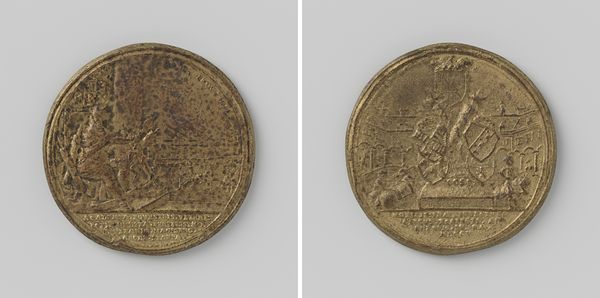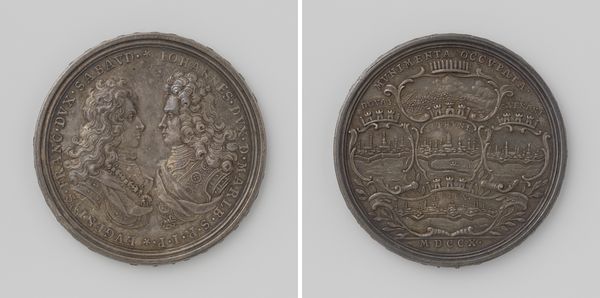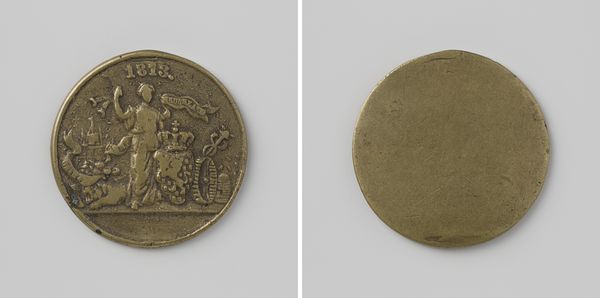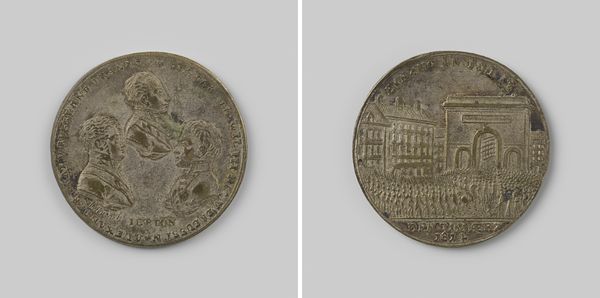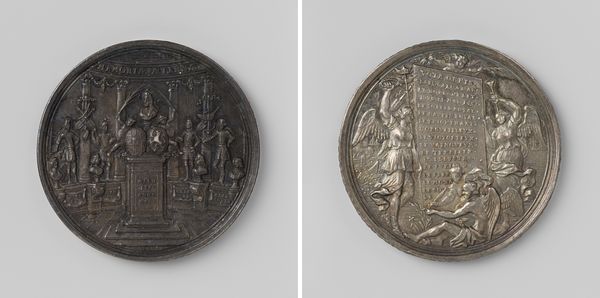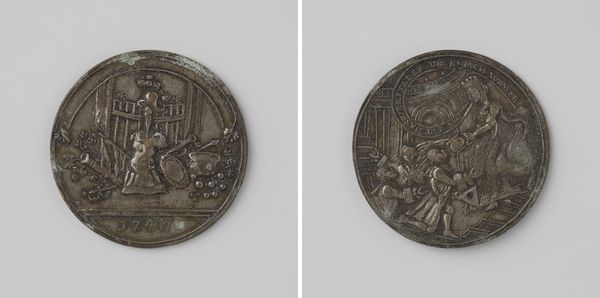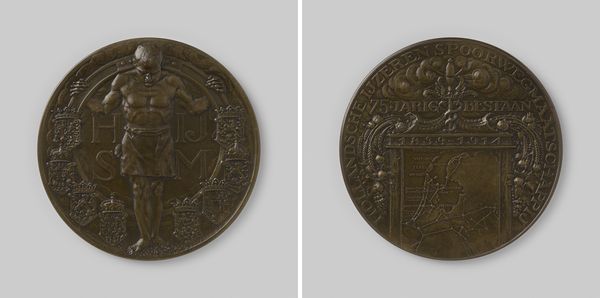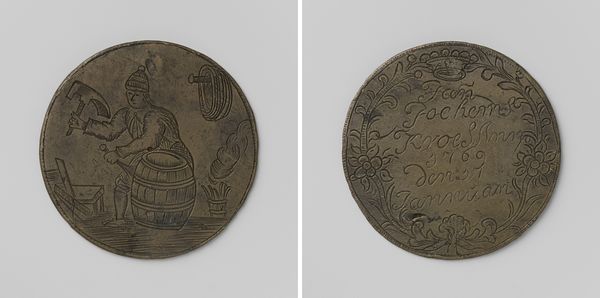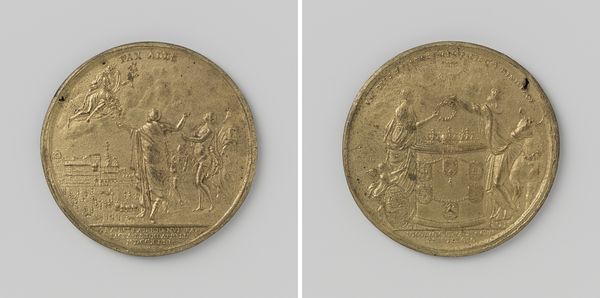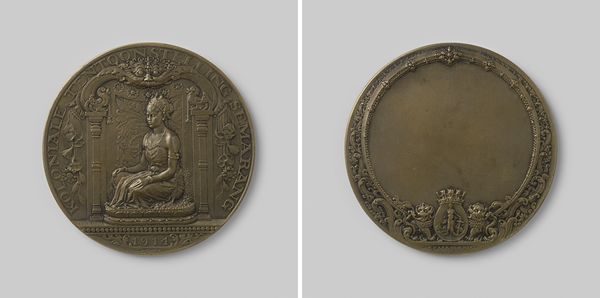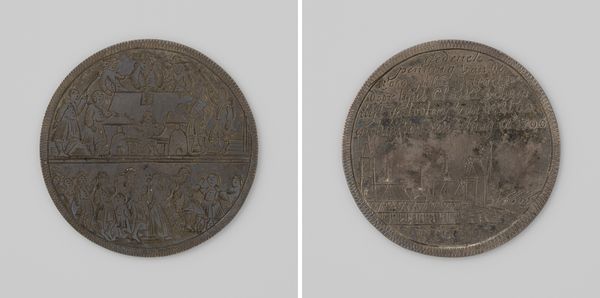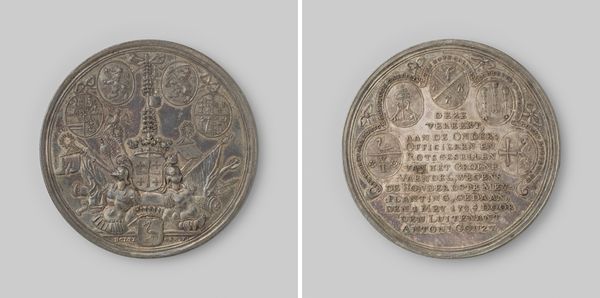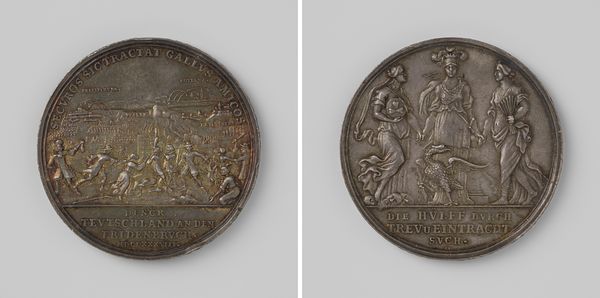
#
natural stone pattern
#
3d sculpting
#
toned paper
#
egg art
#
sculpture
#
detailed texture
#
sculptural image
#
unrealistic statue
#
stoneware
#
carved
Dimensions: diameter 3.3 cm, weight 12.80 gr
Copyright: Rijks Museum: Open Domain
Editor: This is a commemorative medal titled 'Begin van het Congres van Wenen, ter herordening van Europa' made in 1814 by Johann Jakob Lauer. The bronze is densely packed with figures and symbols and appears quite formal and hierarchical. What strikes you most about it? Curator: Immediately, I see a deliberate visual argument about power and its supposed legitimacy after the Napoleonic Wars. Note the stark division on the medal, between those powerful men seated at a table, dictating terms, versus the imagery of subjugation. Editor: Subjugation? You mean the kneeling figure on the right side of the medal? Curator: Exactly. That posture is key. It visually encodes submission. Consider the iconography alongside it – the goddess of Justice looming over a cityscape perhaps intended as Vienna. The medal proposes a specific, very top-down perspective on how order is reimposed after upheaval, masking a more violent process. Editor: It’s almost like propaganda in miniature, using symbolism to convey a certain message about the Congress. But were those “terms” perceived fairly for every country? Curator: Absolutely not. And I think questioning whose narrative the medal is reinforcing is vital. It presents a seemingly divinely sanctioned, justified order, while masking the redistribution of power and territories largely benefitting the existing European elites. How might different populations across Europe – Polish nationalists, for instance – have viewed the 'reordering'? Editor: So, beyond the artistic skill, this piece functions as a statement of power, and its lasting value lies in revealing that statement critically. Curator: Precisely! It pushes us to deconstruct those claims of “order” and ask: order for whom, and at what cost? Considering art in this way forces us to reckon with how history gets memorialized and the inherent biases within these commemorations.
Comments
No comments
Be the first to comment and join the conversation on the ultimate creative platform.
